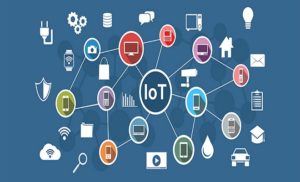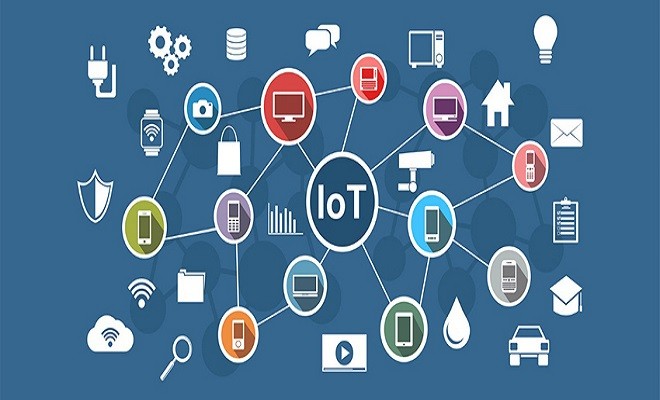Rather than just capturing data, these cognitive IoT devices can think, understand and accordingly provide data to the user.
Curated by Vinay Prabhakar Minj

Things were there even before the term Internet of Things (IoT) was coined, but they were not connected to the internet. Today, by connecting objects with the internet, everyday objects can be made smart and capable to take decisions on their own.
The next step is in transforming these IoT devices into cognitive IoT devices. So, rather than just capturing the data, these devices should also have the ability to think and understand and accordingly provide data to the user.
IoT devices can be turned into cognitive IoT devices by incorporating cognitive computing technologies.
Living IoT devices
Yes, even an animal like buffalo or cow can be made into an IoT device. How? Just connect a location sensor to the ear of the animal. Based on the information, the user can know about the grazing pattern of the animal on a particular day, how much milk it will provide and thus the amount of profit it will generate.
A living being as small as a honeybee can also be made as an IoT device. A small nano-sensor can be placed onto the body of the organism. And based on the data, one can deduce about what kind of flowers that honeybee is interested in. This will lead to planting more such flowers, which will allow the production of more honey and from which more money can be made.
IoT is not free from issues. You cannot put anything and everthing, anywhere and everywhere, there is a lot of connectivity issues.
IoT components
- Object: It is the main component of the entire IoT solution (things, organisms, etc.)
- Connectivity: It comes in various forms such as Bluetooth, Wi-Fi, LowPAN 6, RFID and many other wireless standards.
- Internet: Data is put on the internet for storage, processing and analytics
Technological & application diversity
IoT is a culmination of so many technologies such as augmented reality, signal processing, big data, mobile computing, object and voice detection and many more.
This technology can be used in various sectors like banking, energy, industrial, vending, security and surveillance, medical, consumer, telematics, etc.
Due to such huge diversity, the chances of it going wrong increases. Therefore, the right combination of components should be selected keeping in mind the end result and its applications.
Example of IoT-based solution
Consider a mobile phone device that remotely monitors when and how the home lights get operated. This can happen by:-
- First, registering the object to be monitored (home lights in this case) on an app installed on a phone.
- The next step is device identification. Each and every devices can be subscribed to a particular application running on the internet. Through this, one can easily operate the devices.
IoT functional architecture
Sensors are at the lowest level. It can be temperature sensors, position sensors, velocity sensors, etc. They are connected to the nearest point to track data. Once the data is collected from the objects through the sensors, it is processed and used in various applications. Application areas include survilience, clinical infrastructure monitoring, health monitoring, smart tranpotation, etc.
IoT Protocoal Layer:
- Application Layer
- Information Processing
- Network Construction
- Sensing and Identification
All these four components together make an IoT solution.
The Hardware
- Input/Output devices: Sensors, Actuators, LEDs, Relays Motors, Linear actuators, Lasers, Solenoids, Speakers, LCD, Plasma displays, Robots
- Network devices: Modem, Gateway, Router, Satellite, Tower
- Processing devices: Grid, Cloud, Embedded processor, Quantum computing
- Memory devices: Cloud memory, Flash memory, Quantum memory
Device connectivity protocols
- WiFi
- Bluetooth
- RFID
- ZIGBEE
- NFC
- Ethernet
- 5G is on the way : 5G network is mainly envisioned to support IoT. When 5G becomes operational, it will be easier to put more IoT devices into the network as 5G will allow transfer of the massive data required for the connection. For example, your TV, mobile phone and laptop will become a single device.
Requirements of WSN (wireless sensor network) software
- Smart and autonomous
- Auto-configuration
- Self-monitoring and self-healing
- Anomaly detection and tracking
Communication Protocols of IoT
| Protocols | MQTT | CoAP | XMPP | SOAP | UPnP |
| XML based | No | No | Communication protocol for message-oriented middleware based on XML | Relies on XML information set for its message format | No |
| TCP/UDP | TCP | UDP | TCP | Both TCP and UDP | UDP |
| IPv4/IPv6 | IPv4/IPv6 | IPv4/IPv6 | IPv4/IPv6 | IPv4 | IPv4/IPv6 |
| M2M support | OASIS standard | ETSI standard | – | – | – |
| USAGE | From pervasive devices to servers | Simple electronic devices, Resource-constrained device | Video transfer | Implementation of web services | Permits networked devices to seamlessly discover others |
Event notification service of IoT
- ENS acts as a common collector and distributor of events.
- Events come from multiple heterogeneous sources.
- Devices can subscribe to specific subsets of events.
Publish-Subscribe software architectural style
Whenever there is a change in an event, a notification will be published stating the same. Then accordingly messages are generated to be sent to the user.
Example, for a voltage change or current change, the event will be interpreted as switching ON or OFF. This will be then conveyed to the subscriber (i.e. user) to act upon it.
Object as a (web) service
This is an emerging paradigm. Nowadays services such as food delivery happen over the internet. Moving forward, thanks to AI, robots will be aligning themselves with web technology to provide that service in a faster and efficient manner.
UPnP + protocol for IoT
This is extensively use in presnet day high-end IoT solutions. Going forward, it will be required in cognitive IoT because the objects adhering to this protocol can interact better.
UPnP + protocol involves the following steps
- Discovery: Device advertises itself within a network and enables discovery.
- Description: After the discovery, the control point hits the URLs to get the description.
- Addressing: Then, the address is auto-generated for ease of use.
- Presentation: The focus is on human-machine interfaces.
- Eventing: This step is closely coupled with control actions.
- Control: Here the device is required to perform some action over other device
Issues faced by the presence of a multitude of IoT devices
- Large distributed system: This can sometimes create confusion. Sensors that are placed on a moving object are not made robust enough and at times provide low output.
- Multiple services, multiple users
- Heterogeneous services
- Bursty traffic request: This refers to people sending large amounts of data to the cloud at the same time. This causes an overload resulting in system/server crash.
How to handle these issues? Don’t put all applications at one time, put some applications first so that the moment the device captures data, it also processes it. Divide the data into parts before transfering it to the cloud.
About the author
This article is an extract from a speech presented by Dr. Manjunath Iyer, Principal Consultant, Wipro, atIOTSHOW.IN 2019.
Dr. Manjunath has over two decades of experience and has filed over 60 patents, authored 180 research papers and a book.











